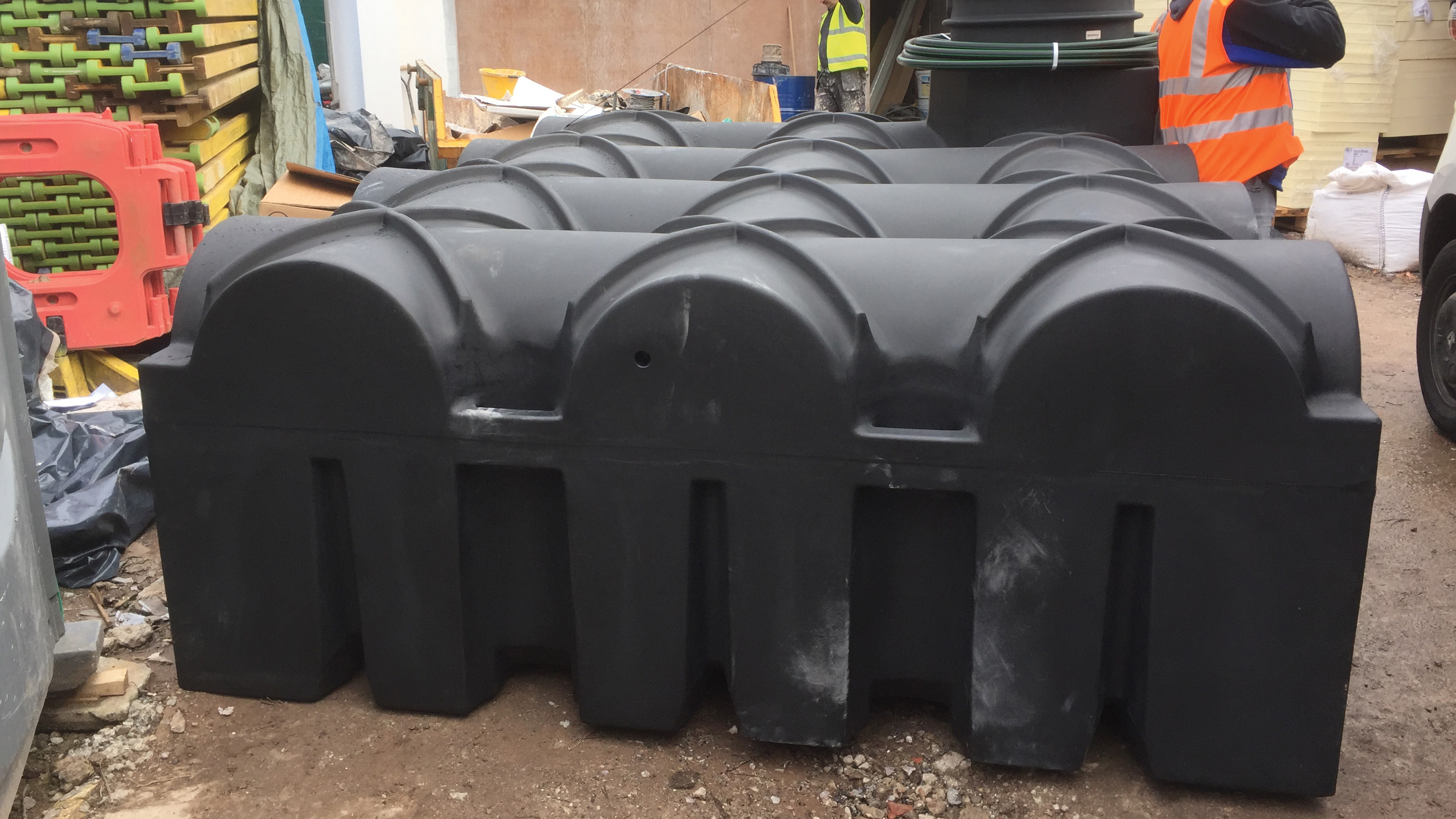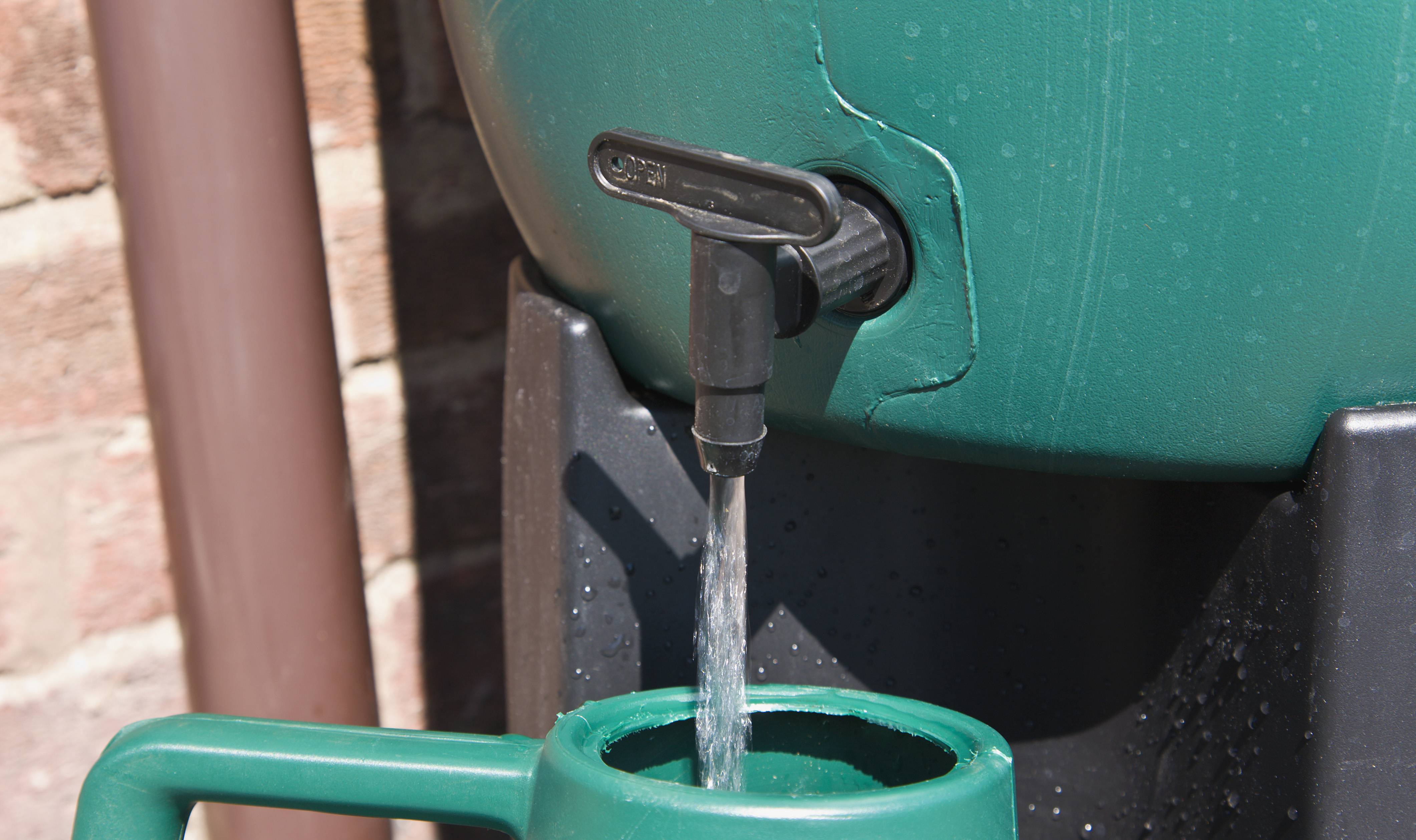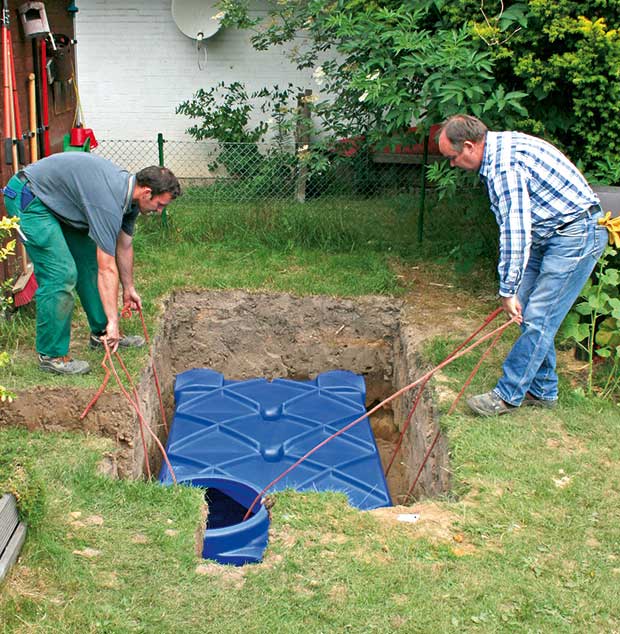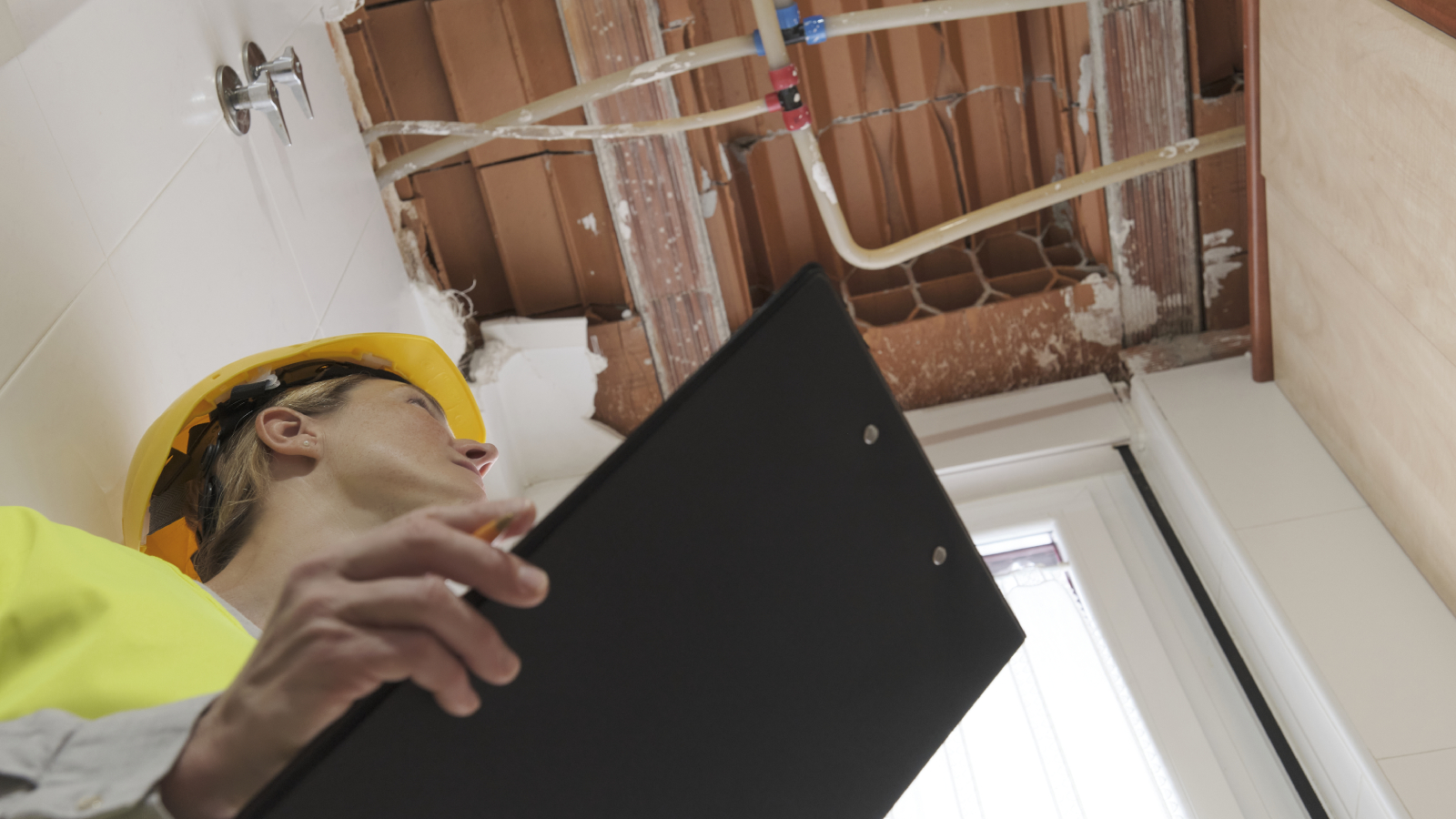Rainwater Harvesting: What Is It and How Can It Make Your Home Greener?
Rainwater harvesting is a great choice for those wanting to improve their home's eco credentials - but what kind of system should you choose?

Rainwater harvesting is the process of collecting rainwater in order to reuse it and reduce your need for using excess water from the mains.
The Energy Saving Trust says that the average UK household uses around 330 litres of water per day (for two-person households the figure is 276 litres. With four people it rises to 450 litres). In 1960, the average was just 165 litres per day.
With homeowners increasingly aware of their home's impact on the environment, popularity of eco-friendly measures, such as rainwater harvesting, in increasing.
Here's everything you need to know about harvesting rainwater at home, from how it works and how much it costs, to how much water you can collect and what you can use it for.
(MORE: Inspiring Eco Homes)
What is it?
What is Rainwater Harvesting?
Rainwater harvesting is an eco-friendly way of collecting and reusing rainwater in our daily lives which would otherwise just wash away.
Some people use it for outside purposes only such as garden irrigation and other people invest more to get it set up to use the water inside for laundry and toilet flushing.
Bring your dream home to life with expert advice, how to guides and design inspiration. Sign up for our newsletter and get two free tickets to a Homebuilding & Renovating Show near you.
Uses
What Can I Use Harvested Rainwater For?
To decide how much rainwater to collect, you first need to know how you will use it.
Typical domestic uses are:
- Garden irrigation
- Toilet flushing
- Car washing
- Laundry

Can I Drink Rainwater I've Collected?
Rainwater isn’t usually used to drink or bathe in (as it will need treating accordingly), but it is an option.
Regulations specify that rainwater is ‘not wholesome’, meaning not drinkable. It is possible to make rainwater wholesome by getting it tested so the appropriate filters can be added.
There are testing companies all over the country, so it is usually easy to get this done at a reasonable price.
Any pollutants found are likely to be either chemical, which a carbon filter will clean up, or heavy metals, which a redox alloy filter will deal with. Both of these are relatively rare, unless the property is close to an industrial area.
In all cases, bacterial disinfection will be needed and this is done with an ultraviolet filter. All of the filters, including the UV lamp, will need to be changed at least annually, with an associated cost implication.
The effect of this is that the water produced will be clean and additive free. The government decided many years ago that we need additives in the water – fluoride and chlorine being the main ones – to keep us healthy.
If you want to drink harvested rainwater, then you will need a whole-house system.
Capacity
How Much Water Can I Collect?
When you start to think about rainwater harvesting it’s important to know what kind of rainfall you can expect and what you may be able to collect.
The average annual rainfall for each region can be found at Current Results and this is a good starting point for finding out.
Then you need to do the following in order to determine how much water you can collect:
- Calculate the ‘flat area’ of the roof, which is usually the same as the footprint of the house below
- Then multiply the rainfall by the roof area
- Finally deduct 20% for evaporation and overflow will give us the figure we need
So as an example:
A house with a roof area of 100m2, near Oxford, which has a rainfall of 660mm per year, the calculation will be 100m2 x 660mm x 0.8, which equates to 52,800 litres of potentially collectable rainwater each year.

Costs
How Much Does a Rainwater Harvesting System Cost?

This depends on what you would like to use the water for. A water butt, costing around £30 and storing 100 litres of water should be plenty if you just want to water your garden.
Three or four water butts (situated at the foot of drainpipes on the home or outbuildings) can be used for small-scale garden watering (you need around 24 litres of water for every m² every week). With a pump fitted they can even provide water for washing the car, as well as watering the garden.
For a whole house water pump and tank, you'll be looking at a cost of approximately £4,000.
What Kind of Whole House Rainwater Harvesting System Do I Need?
A whole-house rainwater harvesting system involves piping rainwater from your downpipe to a storage tank and filtering it on the way to remove coarse material like leaves. Depending on the use the water is going to be put to, finer filtering and disinfection may be needed as well.
The components needed for a whole house rainwater harvesting system include:
- A storage tank
- Pumps
- Filters
- Pipes
- Connectors
- Mains water back-up
- A control system.

Tanks can be either above or below ground, and the cost of these elements is broadly the same for above-ground and below-ground systems: in the region of £3,000 to £4,000, including VAT.
Above-ground Water Tanks
Above-ground water tanks can be used for toilets, garden watering and anything where the water does not need to be filtered. Above-ground systems are cheaper to install than below-ground systems, but are seldom pretty. Installation cost will also vary with access to the tank’s preferred position.
They can be put on roofs if they gravity-feed the water to points of use without the need for a pump. However, that requires roof space and supporting steels to bear the extra weight.
Mounted on the ground, with a pump fitted tends to be easier and cost will be between £1,000 and £3,000, depending on size.
Below-ground Tanks
Underground tanks are the most expensive to buy, install and run (as they use a pump), but offer the greatest savings and the most uses. These can be installed anywhere, but placement under driveways is popular and can help mitigate flooding issues where hard surfaces are used. Shallow-dig tanks available that are intended to reduce installation costs. These are slimmer, but still retain the same storage capacity.
They are preferable if you are concerned about the risk of legionella — an underground tank cannot be disturbed and stores water at 11°C which removes the risk. Being below ground also stops them from freezing.
Maintenance
What Kind of Maintenance Does a Rainwater Harvesting System Need?
Lisa Farnsworth, managing director of rainwater harvesting manufacturer Stormsaver, explains what to consider when it comes to system maintenance.
“There are typically two stages of filtration with rainwater harvesting, and the filters will require cleaning/rinsing through every three to six months — sometimes just once a year, depending on the system. Most tanks are designed to overflow a couple of times a year too, meaning any scrum or debris at the top is removed. The main issue, however, is leaves. Clearing gutters regularly is important, and systems installed on homes in close proximity to trees could require more maintenance.
“Another consideration is the pump: ask your supplier/manufacturer how the water is pumped, and what the voltage is. This can have an impact on running costs and energy consumption. Our Monsoon system uses a 90W pump, compared to other systems which use a 800W submersible pump. This can reduce energy consumption by over 75%. It can be connected to a small solar panel too. There are limitations though; such pumps aren’t always possible with longer pipe runs (for example, if the tank is located at the end of a long garden).
“Also enquire whether the incoming supply is AC or DC. With a DC supply, the pump can be connected to a battery back-up so that if the power fails, the homeowner will always have a water supply for toilet flushing.”
Should I Harvest Rainwater?
Is Rainwater Harvesting Worth It?
Today homeowners are looking to make eco-friendly changes with solar panels and renewable energy installations on the rise
When it comes to water waste, Building Regulations already require that no more water leaves a plot after a new house is built than left previously, a rule aimed at protecting the increasingly overloaded drainage system.
We therefore have to deal with the rain that is falling onto our plots in one way or another. The difference in cost between land drains and a rainwater harvesting system is not so great as to break any new build budget, especially for people who enjoy a bit of horticulture on a weekend.
Rainwater harvesting also reduces your need for water from the mains supply, so can significantly reduce your water bills.
Tim was an expert in sustainable building methods and energy efficiency in residential homes and wrote on the subject for magazines and national newspapers. He is the author of The Sustainable Building Bible, Simply Sustainable Homes and Anaerobic Digestion - Making Biogas - Making Energy: The Earthscan Expert Guide.
Tim's interest in renewable energy was first inspired by visits to the Royal Festival Hall heat pump and the Edmonton heat-from-waste projects. Moving to a small-holding in South Wales fanned his enthusiasm for sustainability. He went on to install renewable technology at the property, including biomass boiler and wind turbine.
He formally ran energy-efficiency consultancy WeatherWorks and was a speaker and expert at the Homebuilding & Renovating Shows across the country.

